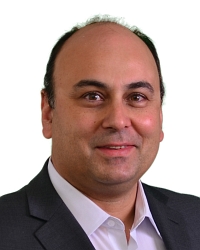TR2015-105
Modeling and Forecasting Self-Similar Power Load Due to EV Fast Chargers
-
- , "Modeling and Forecasting Self-Similar Power Load Due to EV Fast Chargers", IEEE Transactions on Smart Grid, DOI: 10.1109/TSG.2015.2458852, Vol. 7, No. 3, pp. 1620-1629, August 2015.BibTeX TR2015-105 PDF
- @article{Korolko2015aug,
- author = {Korolko, N. and Sahinoglu, Z. and Nikovski, D.N.},
- title = {{Modeling and Forecasting Self-Similar Power Load Due to EV Fast Chargers}},
- journal = {IEEE Transactions on Smart Grid},
- year = 2015,
- volume = 7,
- number = 3,
- pages = {1620--1629},
- month = aug,
- publisher = {IEEE},
- doi = {10.1109/TSG.2015.2458852},
- issn = {1949-3053},
- url = {https://www.merl.com/publications/TR2015-105}
- }
- , "Modeling and Forecasting Self-Similar Power Load Due to EV Fast Chargers", IEEE Transactions on Smart Grid, DOI: 10.1109/TSG.2015.2458852, Vol. 7, No. 3, pp. 1620-1629, August 2015.
-
MERL Contact:
-
Research Area:
Abstract:
In this article, we consider modeling and prediction of power loads due to fast charging stations for plug-in electric vehicles. The first part of the project is to simulate work of a fast charger activity by exploiting empirical data that characterize EV user behavior. The second part describes the time series obtained by this simulator and its properties. We show that the power load aggregated over a number of fast chargers (after deseasonalizing and elimination of the linear trend) is a self-similar process with the Hurst parameter 0.57 < H < 0.67, where H varies depending on the multiplexing level. The main contribution of the paper is empirical evidence that a fitted fractional autoregressive integrated moving average (fARIMA) model taking into account self-similarity of the load time series can yield high quality short-term forecasts when H is large enough. Namely, the fitted fARIMA model uniformly outperforms regular ARIMA algorithms in terms of root-mean-square error for predictions with time horizon up to 120 minutes for H greater than or equal to 0.639. Moreover, we show that the fARIMA advantage on average grows as a function of the Hurst exponent H. Computational experiments demonstrate that this edge is stably greater than 1.1% and can be as high as 5-7% for some scenarios.
